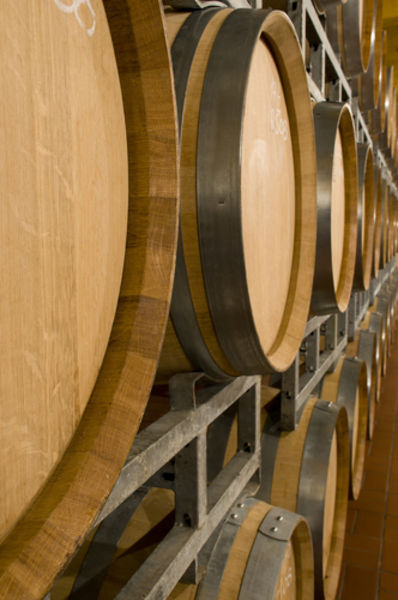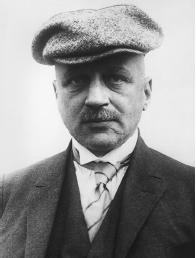Catalysts - Real-life applications

A Brief History of Catalysis
Long before chemists recognized the existence of catalysts, ordinary people had been using the process of catalysis for a number of purposes: making soap, for instance, or fermenting wine to create vinegar, or leavening bread. Early in the nineteenth century, chemists began to take note of this phenomenon.

In 1812, Russian chemist Gottlieb Kirchhof was studying the conversion of starches to sugar in the presence of strong acids when he noticed something interesting. When a suspension of starch in water was boiled, Kirchhof observed, no change occurred in the starch. However, when he added a few drops of concentrated acid before boiling the suspension (that is, particles of starch suspended in water), he obtained a very different result. This time, the starch broke down to form glucose, a simple sugar, while the acid—which clearly had facilitated the reaction—underwent no change.
Around the same time, English chemist Sir Humphry Davy (1778-1829) noticed that in certain organic reactions, platinum acted to speed along the reaction without undergoing any change. Later on, Davy's star pupil, the great British physicist and chemist Michael Faraday (1791-1867), demonstrated the ability of platinum to recombine hydrogen and oxygen that had been separated by the electrolysis of water. The catalytic properties of platinum later found application in catalytic converters, as we shall see.
AN IMPROVED DEFINITION.
In 1835, Swedish chemist Jons Berzelius (1779-1848) provided a name to the process Kirchhof and Davy had observed from very different perspectives: catalysis, derived from the Greek words kata ("down") and lyein ("loosen.") As Berzelius defined it, catalysis involved an activity quite different from that of an ordinary chemical reaction. Catalysis induced decomposition in substances, resulting in the formation of new compounds—but without the catalyst itself actually entering the compound.
Berzelius's definition assumed that a catalyst manages to do what it does without changing at all. This was perfectly adequate for describing heterogeneous catalysis, in which the catalyst and the reactants are in different phases of matter. In the platinum-catalyzed reactions that Davy and Faraday observed, for instance, the platinum is a solid, while the reaction itself takes place in a gaseous or liquid state. However, homogeneous catalysis, in which catalyst and reactants are in the same state, required a different explanation, which English chemist Alexander William Williamson (1824-1904) provided in an 1852 study.
In discussing the reaction observed by Kirchhof, of liquid sulfuric acid with starch in an aqueous solution, Williamson was able to show that the catalyst does break down in the course of the reaction. As the reaction takes place, it forms an intermediate compound, but this too is broken down before the reaction ends. The catalyst thus emerges in the same form it had at the beginning of the reaction.
Enzymes: Helpful Catalysts in the Body
In 1833, French physiologist Anselme Payen (1795-1871) isolated a material from malt that accelerated the conversion of starch to sugar, as for instance in the brewing of beer. Payen gave the name "diastase" to this substance, and in 1857, the renowned French chemist Louis Pasteur (1822-1895) suggested that lactic acid fermentation is caused by a living organism.
In fact, the catalysts studied by Pasteur are not themselves separate organisms, as German biochemist Eduard Buchner (1860-1917) showed in 1897. Buchner isolated the catalysts that bring about the fermentation of alcohol from living yeast cells—what Payen had called "diastase," and Pasteur "ferments." Buchner demonstrated that these are actually chemical substances, not organisms. By that time, German physiologist Willy Kahne had suggested the name "enzyme" for these catalysts in living systems.
Enzymes are made up of amino acids, which in turn are constructed from organic compounds called proteins. About 20 amino acids make up the building blocks of the many thousands of known enzymes. The beauty of an enzyme is that it speeds up complex, life-sustaining reactions in the human body—reactions that would be too slow at ordinary body temperatures. Rather than force the body to undergo harmful increases in temperature, the enzyme facilitates the reaction by opening up a different reaction pathway that allows a lower activation energy.
One example of an enzyme is cytochrome, which aids the respiratory system by catalyzing the combination of oxygen with hydrogen within the cells. Other enzymes facilitate the conversion of food to energy, and make possible a variety of other necessary biological functions.
Because numerous interactions are required in their work of catalysis, enzymes are very large, and may have atomic mass figures as high as 1 million amu. However, it should be noted that reactions are catalyzed at very specific locations—called active sites—on an enzyme. The reactant molecule fits neatly into the active site on the enzyme, much like a key fitting in a lock; hence the name of this theory, the "lock-and-model."
Catalysis and the Environment
The exhaust from an automobile contains many substances that are harmful to the environment. As a result of increased concerns regarding the potential damage to the atmosphere, the federal government in the 1970s mandated the adoption of catalytic converters, devices that employ a catalyst to transform pollutants in the exhaust to less harmful substances.
Platinum and palladium are favored materials for catalytic converters, though some nonmetallic materials, such as ceramics, have been used as well. In any case, the function of a catalytic converter is to convert exhausts through oxidation-reduction reactions. Nitric oxide is reduced to molecular oxygen and nitrogen; at the same time, the hydrocarbons in petroleum, along with carbon monoxide, are oxidized to form carbon dioxide and water. Sometimes a reducing agent, such as ammonia, is used to make the reduction process more effective.
A DANGEROUS CATALYST IN THE ATMOSPHERE.
Around the same time that automakers began rolling out models equipped with catalytic converters, scientists and the general public alike became increasingly concerned about another threat to the environment. In the upper atmosphere of Earth are traces of ozone, a triatomic (three-atom) molecular form of oxygen which protects the planet from the Sun's ultraviolet rays. During the latter part of the twentieth century, it became apparent that a hole had developed in the ozone layer over Antarctica, and many chemists suspected a culprit in chlorofluorocarbons, or CFCs.
CFCs had long been used in refrigerants and air conditioners, and as propellants in aerosol sprays. Because they were nontoxic and noncorrosive, they worked quite well for such purposes, but the fact that they are chemically unreactive had an extremely negative side-effect. Instead of reacting with other substances to form new compounds, they linger in Earth's atmosphere, eventually drifting to high altitudes, where ultraviolet light decomposes them. The real trouble begins when atoms of chlorine, isolated from the CFC, encounter ozone.
Chlorine acts as a catalyst to transform the ozone to elemental oxygen, which is not nearly as effective as ozone for shielding Earth from ultra-violet light. It does so by interacting also with monatomic, or single-atom oxygen, with which it produces ClO, or the hypochlorite ion. The end result of reactions between chlorine, monatomic oxygen, hypochlorite, and ozone is the production of chlorine, hypochlorite, and diatomic oxygen—in other words, no more ozone. It is estimated that a single chlorine atom can destroy up to 1 million ozone molecules per second.
Due to concerns about the danger to the ozone layer, an international agreement called the Montreal Protocol, signed in 1996, banned the production of CFCs and the coolant Freon that contains them. But people still need coolants for their homes and cars, and this has led to the creation of substitutes—most notably hydrochlorofluorocarbons (HCFCs), organic compounds that do not catalyze ozone.
Other Examples of Catalysts
Catalysts appear in a number of reactions, both natural and artificial. For instance, catalysts are used in the industrial production of ammonia, nitric acid (produced from ammonia), sulfuric acid, and other substances. The ammonia process, developed in 1908 by German chemist Fritz Haber (1868-1934), is particularly noteworthy. Using iron as a catalyst, Haber was able to combine nitrogen and hydrogen under pressure to form ammonia—one of the world's most widely used chemicals.
Eighteen ninety-seven was a good year for catalysts. In that year, it was accidentally discovered that mercury catalyzes the reaction by which indigo dye is produced; also in 1897, French chemist Paul Sabatier (1854-1941) found that nickel catalyzes the production of edible fats. Thanks to Sabatier's discovery, nickel is used to transform inedible plant oils to margarine and shortening.
Another good year for catalysts—particularly those involved in the production of polymers—was 1953. That was the year when German chemist Karl Ziegler (1898-1973) discovered a resin catalyst for the production of polyethylene, which produced a newer, tougher product with a much higher melting point than polyethylene as it was produced up to that time. Also in 1953, Italian chemist Giulio Natta (1903-1979) adapted Ziegler's idea, and developed a new type of plastic he called "isotactic" polymers. These could be produced easily, and in abundance, through the use of catalysts.
One of the lessons of chemistry, or indeed of any science, is that there are few things chemists can do that nature cannot achieve on a far more wondrous scale. No artificial catalyst can compete with enzymes, and no use of a catalyst in a laboratory can compare with the grandeur of that which takes place on the Sun. As German-American physicist Hans Bethe (1906-) showed in 1938, the reactions of hydrogen that form helium on the surface of the Sun are catalyzed by carbon—the same element, incidentally, found in all living things on Earth.
WHERE TO LEARN MORE
"Bugs in the News: What the Heck Is an Enzyme?" University of Kansas (Web site). <http://falcon.cc.ukans.edu/~jbrown/enzyme.html> (June 9, 2001).
"Catalysis." University of Idaho Department of Chemistry (Web site). <http://www.chem.uidaho.edu/~honors/rate4.html> (June 9, 2001).
"Catalysts" (Web site). <http://edie.cprost.sfu.ca/~rhlogan/catalyst.html> (June 9, 2001).
Ebbing, Darrell D.; R. A. D. Wentworth; and James P. Birk. Introductory Chemistry. Boston: Houghton Mifflin, 1995.
"Enzymes." Strategis (Web site). <http://strategis.ic.gc.ca/SSG/tc00048e.html> (June 9, 2001).
"Enzymes: Classification, Structure, Mechanism." The Hebrew University (Web site). <http://www.md.huji.ac.il/MedChem/Mechanism-Chymotrypsin/> (June 9, 2001).
Oxlade, Chris. Chemistry. Illustrated by Chris Fairclough. Austin, TX: Raintree Steck-Vaughn, 1999.
"Ozone Depletion" (Web site). <http://www.energy.rochester.edu/iea/1992/p1/2-3.htm> (June 9, 2001).
"University Chemistry: Chemical Kinetics: Catalysis." University of Alberta Department of Chemistry (Web site). <http://www.chem.ualberta.ca/courses/plambeck/p102/p0217x.htm> (June 9, 2001).
Zumdahl, Steven S. Introductory Chemistry: A Foundation, 4th ed. Boston: Houghton Mifflin, 2000.
I'd like to suggest one small correction:
"Enzymes are made up of amino acids, which in turn are constructed from proteins."
Enzymes are made of proteins, which are constructed from amino acids, not the other way around.
Thanks again for a great article.